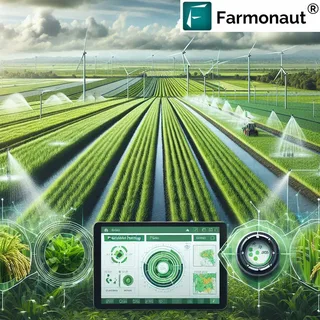Precision agriculture has revolutionized the farming industry by enabling farmers to optimize crop yields, reduce waste, and improve sustainability. One of the key drivers behind this transformation is the integration of cutting-edge technologies, particularly Using AI and Machine Learning in precision agriculture. These advanced tools are reshaping how farmers monitor, analyze, and manage their crops with unprecedented accuracy.
What is Precision Agriculture?
Precision agriculture refers to the management of farming practices based on detailed, site-specific data. Rather than applying the same treatment across an entire field, farmers use technology to make informed decisions on planting, watering, fertilizing, and pest control tailored to the unique needs of specific areas within a farm.
The Role of AI and Machine Learning in Precision Agriculture
AI (Artificial Intelligence) and machine learning algorithms are at the core of this data-driven approach. By processing large volumes of data from sensors, drones, satellite imagery, and weather forecasts, AI systems can detect patterns and predict outcomes that humans might miss.
For example, machine learning models can analyze soil quality, moisture levels, and crop health in real-time, enabling farmers to apply the right amount of water or nutrients precisely where needed. This not only maximizes yield but also conserves resources and reduces environmental impact.
Key Applications of AI and Machine Learning in Precision Agriculture
1. Crop Monitoring and Disease Detection
Using AI-powered image recognition, farmers can detect early signs of crop diseases or pest infestations by analyzing photos taken by drones or cameras installed in the fields. This rapid identification allows timely interventions, preventing large-scale damage.
2. Automated Irrigation Systems
Machine learning models predict soil moisture needs based on weather data and crop growth stages. Automated irrigation systems, guided by these predictions, optimize water usage, ensuring crops receive sufficient hydration without waste.
3. Yield Prediction and Soil Analysis
By integrating historical data and real-time monitoring, AI algorithms help forecast crop yields with higher accuracy. They also analyze soil composition and recommend the best crops or amendments to enhance productivity.
Benefits of Using AI and Machine Learning in Precision Agriculture
Farmers leveraging AI and machine learning enjoy numerous benefits such as increased efficiency, reduced costs, and sustainable farming practices. Additionally, this technology supports data-driven decision-making, which minimizes guesswork and enhances profitability.
Challenges and Future Prospects
Despite its potential, Using AI and Machine Learning in Precision Agriculture comes with challenges, including high initial costs, data privacy concerns, and the need for technical expertise. However, ongoing advancements are making these technologies more accessible and user-friendly.
Looking ahead, the integration of AI with IoT (Internet of Things) devices, robotics, and blockchain could further revolutionize precision agriculture, creating a smart farming ecosystem that ensures food security for a growing global population.
Conclusion
In conclusion, Using AI and Machine Learning in Precision Agriculture is a game-changer for modern farming. By harnessing these technologies, farmers can achieve greater efficiency, sustainability, and productivity—ushering in a new era of intelligent agriculture that benefits both producers and consumers alike.

